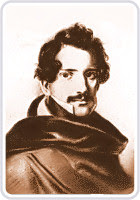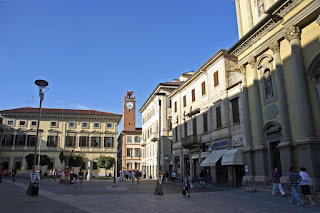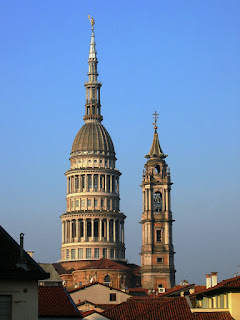Singer who performed into her 80s and lived to 104
 |
| Magda Olivero made her debut in an opera broadcast for radio in 1932 |
Olivero became associated with the works among others of Francesco Cilea, Pietro Mascagni, Umberto Giordano and Franco Alfano, all of whom she actually worked with in person, her longevity providing a 21st century link with the world of 19th century Italian opera. She missed the chance to know and work with Giacomo Puccini only narrowly, the composer passing away at the age of 66 when Olivero was 14.
Born in Saluzzo in Piedmont, Olivero made her operatic debut eight years after Puccini’s death in a radio production in Turin in 1932. She gave her last stage performance 49 years later in 1981, although even that was not the end of her career. Her last recording of her signature role - Cilea’s Adriana Lecouvreur - did not come until 1994, when she was still able to control her pitch and tone at the age of 83.
Born as Maria Maddalena Olivero to a well-to-do family who gave her a good education, she built on her radio debut - singing Nino Cattozzo's oratorio, I misteri dolorosi - to establish a successful career, performing alongside pre-War stars such as Ebe Stignani, Beniamino Gigli and Francesco Merli.
| Olivero with Mario del Monaco appearing in Giordano's Fedora in Naples in 1965 |
The conductor Tullio Serafin helped her with her technique, although he was less helpful, she later claimed, after she refused his amorous advances. She said that her relationship with the tenor, Tito Schipa, also became strained after he became similarly enamoured with her.
In fact, in 1940 she decided to retire from the stage at the age of only 30 after she married Aldo Busch, an industrialist, hoping they would raise a large family. One of her last performances was of Cilea’s Adriana Lecouvreur in Ravenna and it was Cilea, almost a decade later, who would persuade her to make a comeback, telling her that she was the only singer who could do justice to the character. She performed the role again in Brescia in 1951, shortly before the composer died.
That work was to become her calling card, and she sang it many times, as well as featuring often in leading roles in Puccini’s La Bohème, Madame Butterfly and Manon Lescaut, and in Giuseppe Verdi’s La Traviata.
 |
| Magda Olivero at the age of 95 in 2005 |
Her first appearance in the United States came in Dallas in 1967, followed by Kansas and San Francisco. By now her fame as an interpreter of the verismo genre, in which the characters are ordinary people and the singers are adept at bringing dramatic expression to the roles, was established and her New York debut as Tosca at the Metropolitan Opera in 1975 was a much-hyped sensation, even though by then she was 65.
According to the New York Times report, when she made her first entrance, the audience began screaming and cheering, forcing the conductor Jan Behr to stop the music; arias were interrupted by bursts of spontaneous applause and at the end she was given a 20-minute ovation, one of the longest in the theatre's history. She reprised her Tosca for the Met in 1979, opposite Luciano Pavarotti.
For all her success, though, she never really escaped the shadow of Maria Callas or Renata Tebaldi, who were always seen as more marketable and therefore enjoyed more recording contracts than Olivero, whose only complete opera recordings are Turandot and Fedora (1969), in which she was partnered by Mario del Monaco and Tito Gobbi.
After her second retirement, she settled in Milan, telling visitors to her home that the secret of her long life was yoga and a vegetarian diet. She lived for 31 years following the death of her husband in 1983, her wish for a family having never come to pass.
| The early 15th century Cathedral of the Assumption in Piazza Risorgimento in Saluzzo |
Saluzzo, where Olivero was born, is a hill town about 33km (20 miles) north of Cuneo and 61km (38 miles) south of Turin, in Piedmont. Most of its 15th century old town is intact, with numerous cobbled streets, steep staircases, churches and elegant palaces to explore. In the Piazza Risorgimento is Cathedral of the Assumption, built between 1491 and 1511 in the Lombard-Gothic style. Another attraction is the Castiglia, a castle built at the summit of the town in the 13th century by the Marquis Tommaso I and renovated in 1492 by Ludovico II of Saluzzo, at the time when the town was a powerful city-state.
 |
| The Teatro degli Arcimboldi, which was built in a converted Pirelli tyre factory in Milan |
Milan’s best-known theatre is the opera house and ballet theatre Teatro alla Scala, inaugurated in 1778, but it is not the only theatre. Other respected venues are Teatro Sala Fontana, set within the beautiful cloisters of the church of Santa Maria alla Fontana in the northern part of the city, the Teatro Manzoni in Via Alessandro Manzoni, not far from Porta Nuova, and the ultra-modern Teatro degli Arcimboldi, which was built in 2001 in anticipation of the closure and renovation of La Scala opera house, in a converted Pirelli tyre factory about 7km (4.5 miles) from the city centre, in an area known as Bicocca.
More reading:
The beautiful work of Francesco Cilea
Giacomo Puccini - the musical genius who took the baton from Verdi
Pietro Mascagni and a career built on one great opera
Also on this day:
1474: The birth of poet Ludovico Ariosto
1504: The unveiling of Michelangelo's David in Florence
Home










